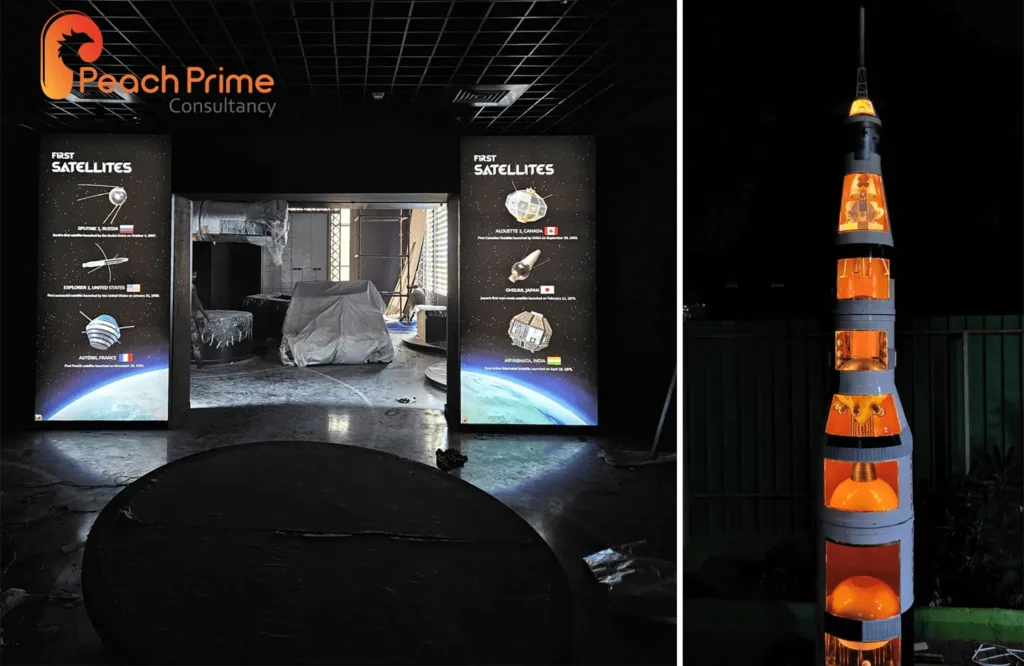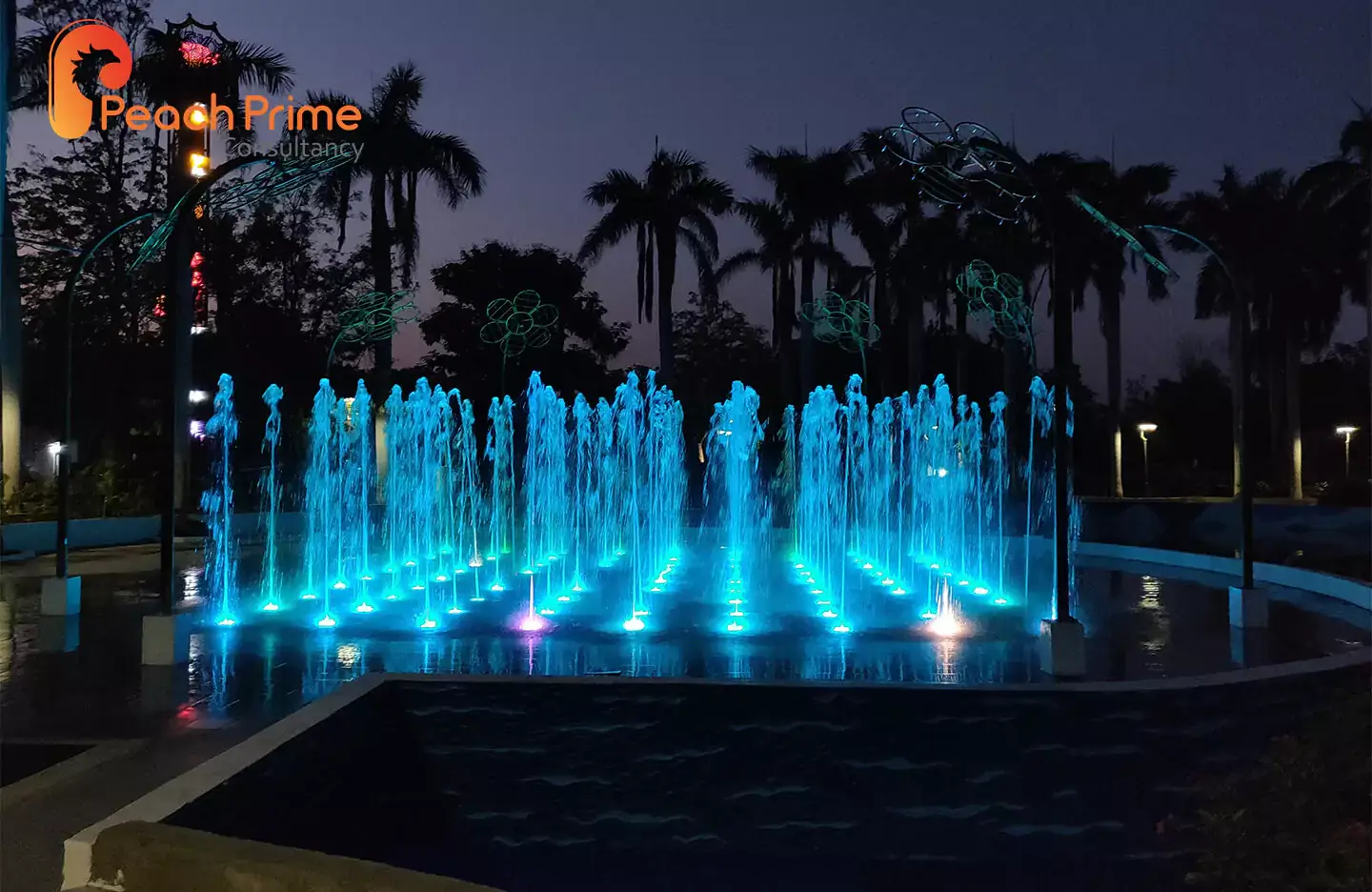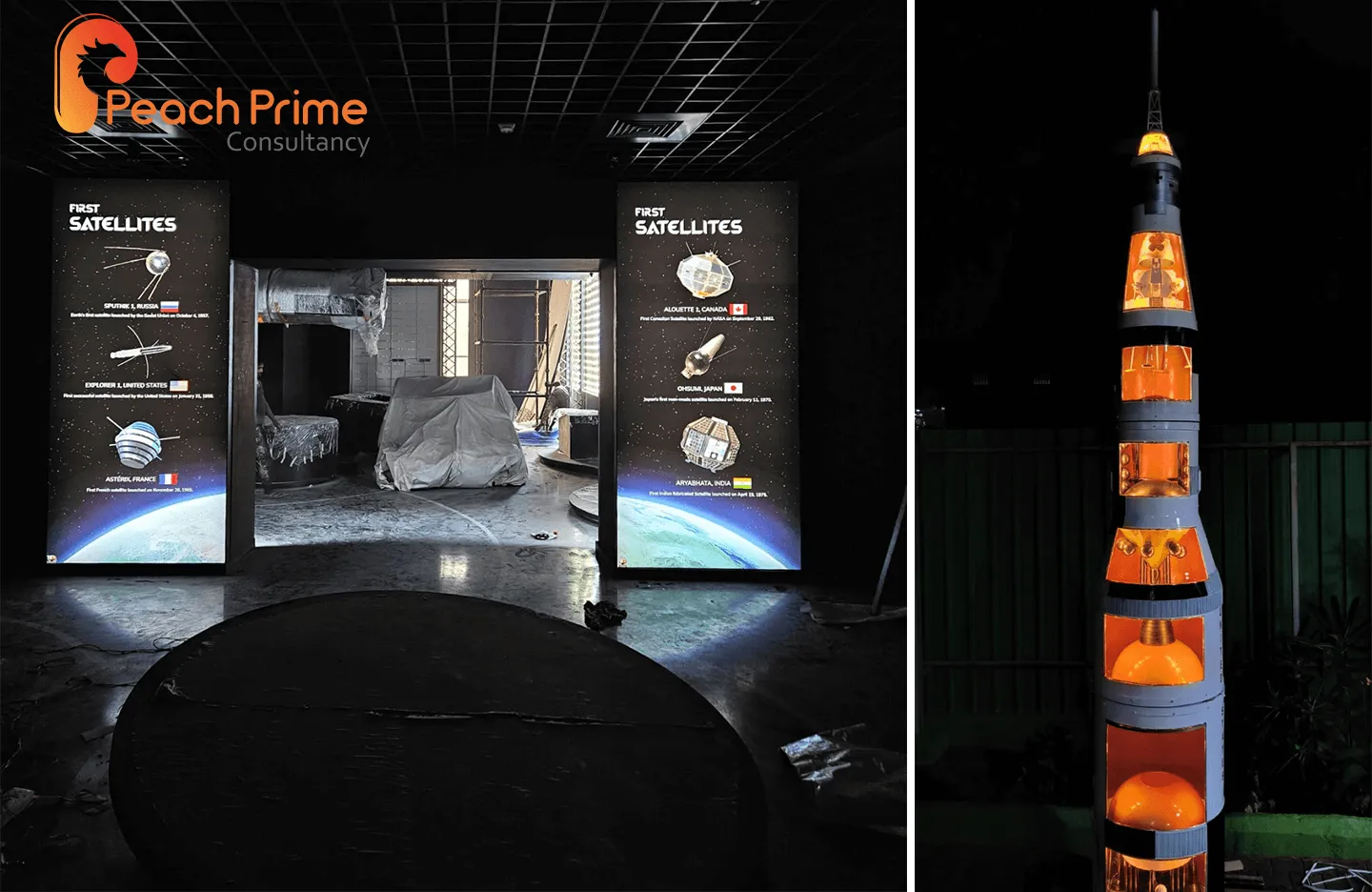Blogs
Designing Immersive Storytelling Galleries That Transform the Future of Modern Museums

Museums have evolved from quiet halls filled with static displays into immersive storytelling environments where design, light, and technology work together to engage visitors. Today’s museums invite interaction — turning observation into emotional participation.
At Peach Prime, we believe storytelling lies at the heart of cultural connection. Through narrative design, sensory engagement, and technology, museums are being reimagined as dynamic spaces that educate, inspire, and move audiences.
The Power of Storytelling in Museums
Every museum tells a story — but how that story is told determines how deeply it resonates. Narrative design helps transform artifacts into voices that speak directly to visitors.
Why storytelling matters:
- Builds emotional connections with exhibits
- Makes complex ideas easier to understand
- Turns learning into engaging experiences
- Encourages return visits through evolving narratives
A well-told story ensures visitors remember what they felt, not just what they saw.
From Display to Experience
Traditional museums focused on display; modern ones focus on participation. The shift toward interactive gallery design allows visitors to explore through movement, sound, and technology.
Elements that define immersive museum experiences:
- Interactive installations responding to touch or motion
- Multimedia storytelling with projection, music, and light
- Pathways guiding visitors through unfolding narratives
- A seamless blend of digital and physical experiences
This transformation turns galleries into living spaces of discovery and emotion.
Building a Strong Narrative Framework
Every powerful exhibition begins with a clear narrative. Story-driven exhibition design connects all visual, spatial, and sensory elements around one central theme.
Core components:
- A unifying storyline or concept
- Emotional highs and quiet reflective moments
- Lighting and visuals that build mood and meaning
- Smooth transitions that sustain engagement
Narrative design transforms museums into cinematic journeys — structured, emotional, and unforgettable.
Merging Technology with Storytelling
Technology breathes life into stories, making them interactive and adaptive. When thoughtfully integrated, it enhances emotion without overshadowing authenticity.
Examples include:
- AR for hidden historical layers
- Gesture-controlled projections and responsive media
- Immersive soundscapes synced with visuals
- Smart systems that adapt to visitor behavior
The secret lies in balance — using technology to serve the story, not replace it.
Designing Visitor-Centered Experiences
Every visitor learns and experiences differently. Visitor-centered design ensures flexibility, accessibility, and personal connection.
Design strategies:
- Multi-layered content to suit various interest levels
- Intuitive pathways and self-guided exploration
- Inclusive design for all ages and abilities
- Balanced zones for reflection and interaction
This approach creates inclusive museums where everyone finds their own story.
Sensory Engagement Through Design
Memorable experiences engage multiple senses. Lighting, sound, and texture bring stories to life, making them emotional and immersive.
How sensory design enhances storytelling:
- Lighting sets tone and mood
- Soundscapes evoke place and emotion
- Tactile materials invite hands-on learning
- Subtle scent and temperature changes reinforce atmosphere
When every sense participates, learning becomes lasting.
Spatial and Thematic Planning
Immersive storytelling relies on thoughtful spatial choreography. The design layout must align with the rhythm of the story.
Best practices:
- Divide exhibits into narrative chapters or zones
- Use architecture, color, and light for smooth transitions
- Highlight key moments with interactive points
- Maintain visual continuity across exhibits
Effective spatial planning turns storytelling into a walkable narrative — one visitors can feel and follow.
Creativity and Emotion in Design
Emotional connection is the bridge between culture and visitor. Creative storytelling design uses imagination and empathy to make that connection tangible.
Designers achieve this by:
- Using personal stories to humanize history
- Creating tension and resolution in narrative flow
- Crafting “wow moments” that inspire reflection
- Using cinematic techniques to amplify emotion
When design touches emotion, museums transcend information — they create empathy.
The Future of Storytelling in Museums
Tomorrow’s museums will merge creativity, data, and technology into adaptive storytelling. Experiences will respond to the visitor — evolving in real time.
Emerging trends:
- AI-guided tours that personalize storytelling
- Responsive lighting and sound systems
- Hybrid physical-digital galleries
- Real-time narratives shaped by visitor interaction
The museums of the future will not just display culture — they will live it.
Peach Prime: Crafting Immersive Storytelling Galleries
At Peach Prime Consultancy, we design immersive storytelling galleries that unite culture, creativity, and technology. Our expertise spans interactive systems, exhibition design, and architectural lighting to create spaces that educate and inspire.
From concept to installation, we help museums and cultural institutions transform storytelling into an experience — one that connects emotionally with every visitor.
We don’t just design exhibitions — we design stories that live, breathe, and move people.



